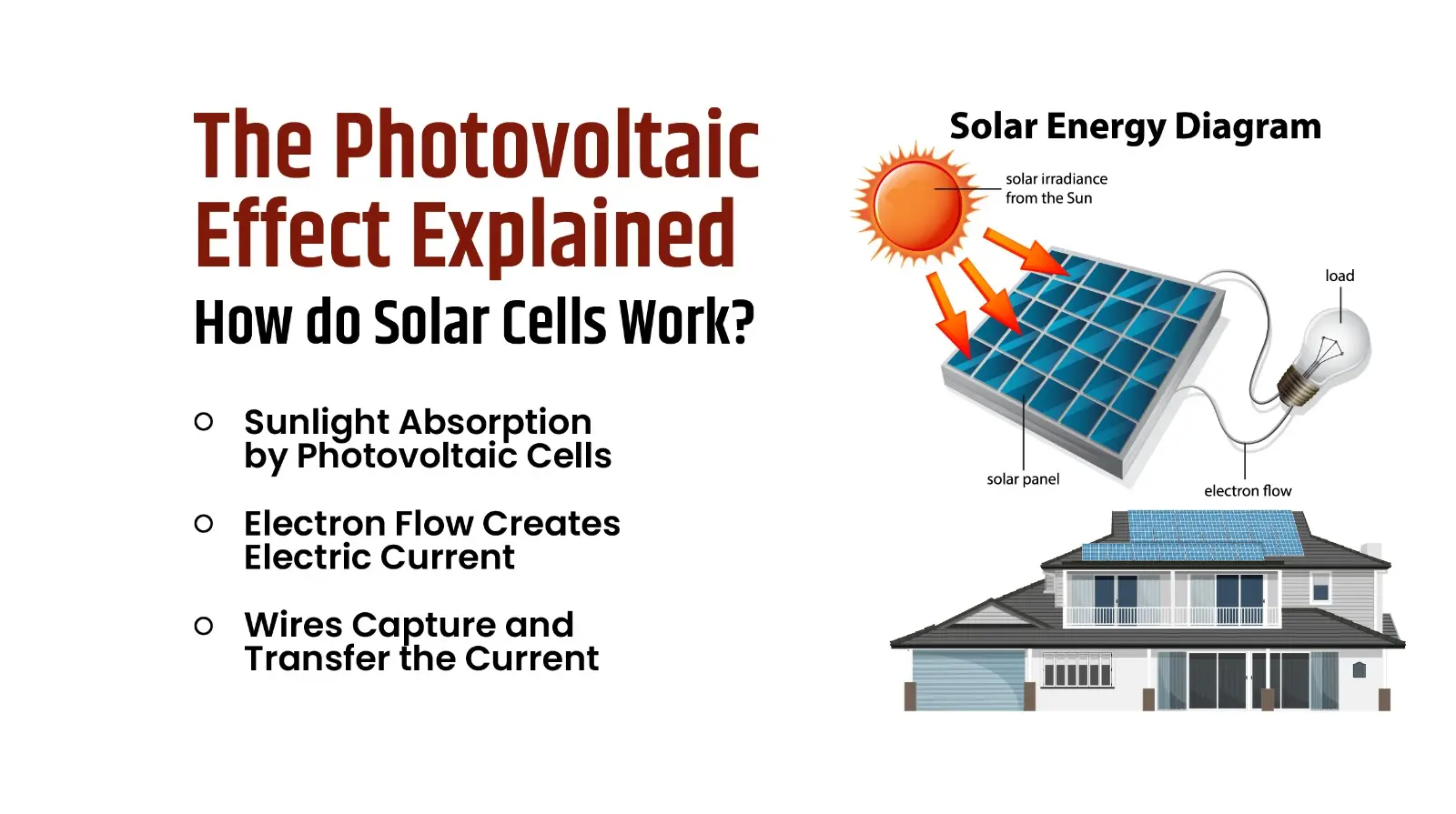How do Solar Cells work? Photovoltaic Cells Explained
Solar panels are everywhere around us. As the world is shifting towards solar energy, we can witness the increased use of solar panels. Whether it is solar roof-top systems, solar street lights, or solar pumps, solar panels are incorporated in every system. But what is behind the functioning of solar panels? It is the solar cells that make electricity generation possible.
So, now the question is, how do these solar cells work? In this blog, we will focus on the working of solar cells and their importance in the whole solar panel system.
What are Solar Cells?
A solar module contains numerous components, and the most significant one among them is the photovoltaic cell. Also referred to as solar cells, the cells assist in the conversion of sunlight into electricity. Constructed from semiconductor materials, typically silicon, the photovoltaic cell traps the sunlight and releases electrons. The process generates an electric current.
So, you may know by now that solar cells are a very significant component of solar panels. Solar panels are utilized in homes, buildings, and companies as well. The various solar panels are monocrystalline, polycrystalline, and thin-film solar panels.
The Photovoltaic Effect Explained: How do Solar Cells Work?

The solar cells function in three main steps:
- Light absorption and electron movement
- The flow of electrons generates electric current
- The same current is captured and directed to the wires
This is how the photovoltaic effect takes place. Now, let's go into the details of how each step takes place and what it leads to.
Sunlight Absorption by Photovoltaic Cells
The whole process begins when the sunlight hits the surface of solar panels. As you already know, solar panels consist of solar cells. As the sunlight falls on the surface of solar panels, the photons react and transfer their energy to the cell. After the solar cells, which are made from a semiconductor material called silicon, absorb the sun’s energy, the electrons begin moving.
Electron Flow Creates Electric Current
So in photovoltaic technology, there are generally two layers of silicon and each one is treated to create an electric field. This method is called “doping”. One side has a net positive charge, and the other side has a net negative charge. So the field directs the electrons in one single direction, causing them to generate an electrical current.
Wires Capture and Transfer the Current
Therefore, as soon as the electrons begin to flow, the metal plates on the solar cells gather them and transfer them to the wires. The electricity generated is in the form of Direct Current (DC), and thus through the wires it arrives at a solar inverter. The inverter transforms the direct current into an alternating current (AC). The alternating current is highly appropriate to be used within homes or buildings.
The entire process is responsible for generating os electricity, which is subsequently transferred to different other locations. Nevertheless, an individual photovoltaic cell is unable to create much usable energy, so many solar cells are arranged in series to make up a solar panel. They are located on top of roofs, solar farms, and even in far-flung regions.
Types of Solar Cells
Today, we can see the use of two main types of solar cells: monocrystalline and polycrystalline.
Although there are other types as well, like thin-film cells or organic cells, we commonly see the usage of these two the most.
Monocrystalline Solar Cell
Monocrystalline cells are made from silicon waters, and as the name suggests, they use a single crystal of silicon. Monocrystalline solar cells are highly efficient because of a single silicon crystal, which makes the flow of electrons easy.
Polycrystalline Solar Cells
These cells are also made from silicon; the only difference is that many shards of silicon are melted together, hence the name. Polycrystalline solar cells are less efficient than their counterpart, but the upside is that they are generally cheaper. So, you can find them being used in many solar panel systems today.
How is a Photovoltaic Cell Made?
Extraction of Silicon
To make solar cells, one needs silicon. Silicon is commonly found in rocks like crushed quartz and gravel. The raw materials are extracted and heated at high temperatures. This forms molten silicon, which is basically a product of the purification process.
Creation of Silicon Wafers
Now that we have, motlen silicon, it is left to cool down. The cooled silicon is then pressed into thin sheet-like wafers. These wafers, then, get cut into pieces for monocrystalline or polycrystalline solar cells.
Doping the Silicon
Doping the silicon refers to making the silicon conductive. We dope the silicon with boron to get a P-type silicon and with phosphorus to get an N-type silicon. Where these two silicon types interact, a p-n junction results, and an electric field is formed to permit the free movement of electrons.
Anti-reflective coating
Since silicon wafers possess a polished surface, sunlight is reflected off them. So to avoid it from happening, an anti-reflective coating is done. This also helps maximize the efficiency of solar cells.
Adding of Metal Plates and Protective Layer
Metal Contacts are used at the front and back of the silicon wafer. These plates allow the collection of the flow of electrons and also help them direct to the wires. To protect the silicon and solar cells from harsh weather or any kind of damage, a protective layer is added. This protective layer is generally made of glass.
Conclusion
Now, we can say that solar cells are the building blocks of any solar panel. These cells help with the most important task, that is, electricity generation. Due to the process of converting solar energy into electricity, solar power systems are benefiting the environment greatly. This is not only a very clean and green source of energy but also sustainable in the long run.
If you are planning to incorporate solar panels or solar power systems in your home, office or business, KLK Ventures is the right choice. By opting for the excellent services, you will be taking a huge step towards sustainability. For efficient solar solutions, you need a good guide, and KLK Ventures proves to be the one. Don't hesitate to reach out in case of any queries.
